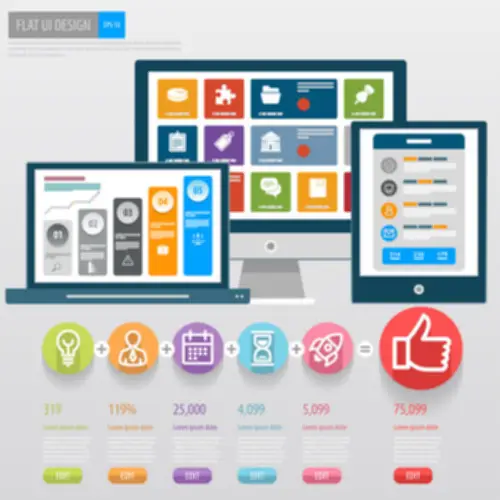A HIP might help streamline supply chain processes by integrating all of those systems, ensuring that data is consistent and correct throughout the board. The trend toward adoption of cloud is accelerating as organizations look to profit from the flexibility, agility, scalability, and entry to new innovations (such as advanced analytics and AI platforms) that most cloud distributors provide. As organizations look to re-architect, re-platform, or re-host some of their purposes to cloud, there is the need for complexity reduction and optimization of integrations for higher system efficiency and management. Organizations wish to keep away from the pitfalls of spaghetti, hand-coded, and file-based integrations which aren’t https://www.canisciolti.info/tips-for-the-average-joe-14/ scalable or simple to take care of. A Hybrid Integration Platform (HIP) supplies a framework for laying down a comprehensive integration and information administration technique across the enterprise in the ever-evolving hybrid, multi-cloud world.

Hybrid Integration Platform (hip) For Agile Systems

Essentially, a Hybrid Integration Platform uses these four dimensions to provide the options you should integrate information and applications throughout your on-premises and cloud environments. While APIs are the current rage, API management platforms usually are not adequate for all connectivity requirements. To keep away from that, many decided to use hybrid integrations to connect all their techniques and purposes each internally and externally. Since cloud adoption has been accelerating, it’s been crucial to search out vendors that can assist to attach multiple functions of different natures.

Industrial Iot Data Integration

Your deployment model is the big-picture overview of your systems that the HIP will use to create integrations. A lot of progressive startups, similar to supply chain analytics or booking quotes providers, will utilize this type of information. Often, they will want to cooperate with large enterprises that use legacy functions and outdated EDI processes, and the startups wish to seize the information by way of their REST APIs.
Why Does Hybrid Information Integration Matter?
IPaaS (Integration Platform as a Service) and ESB (Enterprise Service Bus) are both applied sciences used for integrating different applications and methods inside an organization. ESB is a middleware software program that acts as a communication layer between numerous techniques by facilitating message trade and integration using a hub-and-spoke structure. It focuses on providing a centralized platform for connecting and orchestrating totally different services and purposes.
Progress In Data, Purposes And Customers Across The Enterprise
Thus, it is the attribute implementation mannequin for giant, world and heterogeneous companies. However, it’s applied by several groups, often situated at the totally different business’ subsidiaries. Therefore, it is best for giant and international organizations which are homogeneous in nature.


A HIP resolution is typically a one-and-done funding, meaning one platform can examine every box for required knowledge integration capabilities. On the opposite hand, an iPaaS answer could require separate platforms to scrape and cleanse information from on-premises systems, creating an extra expense. However, an iPaaS may not require customized API integrations, which might scale back the whole investment. An iPaaS answer can only carry out system-to-system integrations with web and cloud-based sources, which restricts the platform’s flexibility. As such, the organizations that go for an iPaaS answer must spend money on a further platform to perform knowledge transformation tasks on-premises.
Prepare for the discussions to current your integration cases and challenges clearly so the vendor can suggest the easiest way to go about it and what would it price. And don’t neglect to include all of the stakeholders out of your group that could assist you to to make the best choice. On-premise tends to check with physical hardware, containers or a virtual private cloud. When referred to when it comes to integration it signifies that the user has management over the maintenance of the app. Strictly Necessary Cookie must be enabled always in order that we can save your preferences for cookie settings.
It permits companies to seamlessly combine data across varied cloud services, gadgets, on-premises methods, and other IoT units, thereby enhancing operational effectivity and knowledge accessibility. Hybrid Cloud Integration ensures seamless connectivity between on-premises methods and cloud environments, fostering a scalable and adaptable infrastructure. It permits environment friendly data and software exchange throughout various platforms, supporting agility in responding to market demands. This strategy melds the security of private clouds with the scalability of public clouds, providing an optimized computing setting that meets each operational flexibility and cost-effectiveness needs. IPaaS (Integration Platform as a Service) is a cloud-based solution for connecting functions and information sources.
- There are so many overlaps between Hybrid Integration Platforms and integration Platforms as a Service that it can be difficult to decide on just one.
- According to Gartner, generally, traditional integration tools usually are not in a place to handle the complexity of hybrid integrations.
- As a result, an organisation that isn’t utterly trendy can begin appearing like they’re.
- With the adoption of microservices and serverless computing, HIPs will provide unprecedented agility and scalability.
- This proactive method ensures adherence to industry-specific or regional laws, affording a further layer of safety for sensitive integrations, notably when transmitting information over public networks.
For occasion, a enterprise utilizing a traditional ERP system alongside a contemporary cloud-based CRM would discover HIP advantageous. Do you keep in mind the “good old days” of IT, when a whole enterprise could run on a single LAN, with all their business-critical applications and infrastructure hosted in a closet down the hall? Now, the hundreds of systems, knowledge sources, and platforms most organizations rely on are dispersed throughout the world. Getting all these techniques to speak and work together is important to achieving digital transformation. The good news is that there are additionally strategic iPaaS and hybrid integration platform vendors (or sometimes known as ‘EiPaaS’ providers) available on the market that may assist SMBs – and the pricing can be quite reasonable.
Hybrid Integration Platforms provide a strong and versatile answer for modern enterprises, permitting them to overcome today’s integration challenges and adapt quickly to new opportunities. With improved business agility, flexibility, safety, and collaboration, HIPs are remodeling the means in which organizations handle their IT landscape and drive digital transformation. While you would possibly have an in-house integration group within your IT division, and the group will stay essential, more corporations want to outsource their integrations to build a related enterprise that shares info more strategically. As collaboration is crucial right now across all stakeholders, creating integrations sooner is important.
In this text, you have seen some key ideas that define HIP, and which may also assist you to analyze how one can apply this approach. How to choose on among them depends mainly on the scale and degree of homogeneity / heterogeneity of your business. In order to do this, first we have to think about what components are essential when deciding on an HIP strategy. This unified information supply results not only out of the necessity to cut back data silos, but also from the need for updated information that prompts the right business choices and thus, will increase in gross sales and income.
However, many corporations have a piecemeal approach to digitalization, which suggests many prototype HIPs lack some necessary capabilities and can’t deal with essentially the most demanding integration duties. To find a strategic iPaaS that functions as a HIP, you’ll have to evaluate your choices fastidiously, as most iPaaS options have some gaps and won’t find a way to assist you with more advanced integration challenges. A Certified ScrumMaster and an professional on the DCKAP Integrator, he enjoys offering purchasers with in-depth analysis of digital architecture. He delights in higher understanding the psychology of digital structure, its interactions with businesses, and ahead developments. When he’s not working, he watches a film or reads books about human interactions and the tech world.